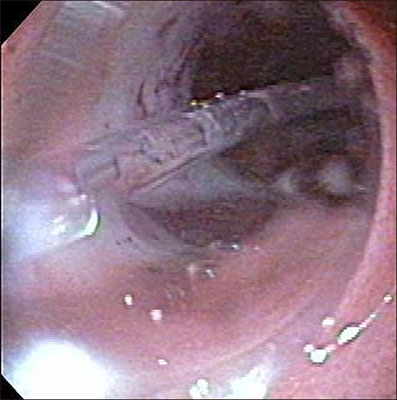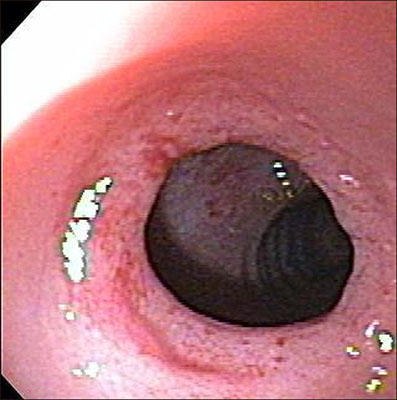Pediatr Gastroenterol Hepatol Nutr.
2018 Oct;21(4):351-354. 10.5223/pghn.2018.21.4.351.
Endoscopic Balloon Dilation for Treatment of Congenital Antral Web
- Affiliations
-
- 1Pediatric Anesthesiology, Hepatology and Nutrition, Children's Hospital of Colorado, Denver, CO, United States.
- 2Pediatric Gastroenterology, Hepatology and Nutrition, Children's Hospital of Colorado, Denver, CO, United States.
- 3College of Arts and Science, University of South Florida St. Petersburg, St. Petersburg, FLUnited States.
- 4Office of Medical Education, Johns Hopkins All Children's Hospital, St. Petersburg, FL, United States.
- 5International Medicine, Johns Hopkins All Children's Hospital, St. Petersburg, FL, United States.
- 6GastroenterologÃa Pediátrica, Hospital Herrera Llerandi, Guatemala City, Guatemala.
- 7Pediatric Gastroenterology, Johns Hopkins All Children's Hospital, St. Petersburg, FL, United States. mwilsey1@jhmi.edu
- KMID: 2422000
- DOI: http://doi.org/10.5223/pghn.2018.21.4.351
Abstract
- Congenital antral webs are a rare but relevant cause of gastric outlet obstruction in infants and children. The condition may lead to feeding refusal, vomiting, and poor growth. Due to the relative rarity of the disease, cases of congenital antral web are frequently misdiagnosed or diagnosed with significant delay as physicians favorably pursue diagnoses of pyloric stenosis and gastric ulcer disease, which are more prevalent. We report a case of an eight-month-old female who presented with persistent non-bilious emesis, feeding difficulties, and failure to thrive and was discovered to have an antral web. The web was successfully treated with endoscopic balloon dilation, which resolved her symptoms. Two years later, the patient remains asymptomatic and is thriving with weight at the 75th percentile for her age.
MeSH Terms
Figure
Reference
-
1. Noel R, Glock MS, Pranikoff T, Hill ID. Nonobstructive antral web: an unusual cause of excessive crying in an infant. J Pediatr Gastroenterol Nutr. 2000; 31:439–441.
Article2. Nam S, Koo SH, Chung ML, Jung YJ, Lim YJ. Congenital antral web in premature baby. Pediatr Gastroenterol Hepatol Nutr. 2013; 16:49–52.
Article3. Lui KW, Wong HF, Wan YL, Hung CF, Ng KK, Tseng JH. Antral web: a rare cause of vomiting in children. Pediatric Surg Int. 2000; 16:424–425.4. Lu JP, Huang Y, Wu J, Chen SY. Uncommon congenital antral web misdiagnosed twice as pyloric ulcer: successful treatment with endoscopic balloon dilatation. Turk J Pediatr. 2014; 56:100–102.5. Byun J, Kim HY, Noh SY, Kim SH, Jung SE, Lee SC, et al. Neonatal gastric perforation: a single center experience. World J Gastrointest Surg. 2014; 6:151–155.
Article6. Ghahremani GG. Nonobstructive mucosal diaphragms or rings of the gastric antrum in adults. Am J Roentgenol Radium Ther Nucl Med. 1974; 121:236–247.
Article7. Saral W, Baron TH Sr. Gastric antral web: a rare cause of gastric outlet obstruction treated with endoscopic therapy. Gastrointest Endosc. 2013; 78:450.
Article
- Full Text Links
- Actions
-
Cited
- CITED
-
- Close
- Share
- Similar articles
-
- A Case of Antral Web in a Child
- A Case of Congenital Common Bile Duct Web Treated with Balloon Dilation under Endoscopic Retrograde Cholangiopancreatography in a Young Child
- Antral Web with Characteristic Appearance in Gastroscopic and Barium Study in an Eight-year-old Girl
- Endoscopic Papillary Large Balloon Dilation: Guidelines for Pursuing Zero Mortality
- Balloon dilation of congenital supravalvular pulmonic stenosis in a dog




